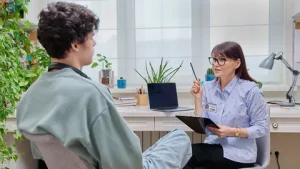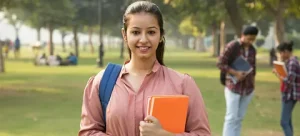Jobs and education
Brain Boost: The Crucial Role of Reading in Child Development

Introduction:
In the enchanting world of childhood, where every experience is a stepping stone to growth, the role of reading emerges as a beacon guiding young minds towards development. “Brain Boost: The Crucial Role of Reading in Child Development” seeks to unravel the transformative power of books in shaping the cognitive, emotional, and social landscapes of our little ones. Let’s embark on a journey through the pages of understanding to discover how the simple act of reading holds the key to unlocking a world of potential for our children.
The Cognitive Symphony: Building Minds, One Book at a Time
Nurturing Language Skills: The journey of reading commences with the magic of language. Exposure to a rich vocabulary and varied sentence structures provides a linguistic playground for young minds. Books become the architects shaping a child’s ability to communicate, laying the foundation for both verbal and written expression.
Children who engage with books from an early age are exposed to a diverse array of words and phrases. Picture books, in particular, offer a visual feast of language, combining words with vivid illustrations. As children encounter new words in the context of a story, their vocabulary expands, enabling them to articulate thoughts and feelings with greater precision. The verbal dexterity gained through exposure to language-rich literature becomes a valuable asset in academic and social settings.
Stimulating Imagination and Creativity: Within the pages of a book lies a canvas for imagination to flourish. As children immerse themselves in narratives and visual worlds, their creativity blossoms. The ability to visualize characters, settings, and events not only enhances creative thinking but also lays the groundwork for problem-solving skills.
Consider a child lost in the adventures of a fantastical tale, where dragons soar across enchanted landscapes. The mental imagery evoked by the narrative fosters creativity as the child envisions the vibrant details of the story. This imaginative exercise extends beyond the pages of the book, influencing the child’s approach to real-world challenges. Creative thinking becomes a natural response, allowing them to explore innovative solutions and view the world through a lens of possibility.
Fostering Critical Thinking: The narrative structure of books introduces children to the art of critical thinking. Plot twists, character motivations, and cause-and-effect relationships become mental puzzles to solve. Reading cultivates analytical skills, encouraging children to think beyond the surface and explore the depths of a story.
As young readers navigate the complexities of a narrative, they learn to question, infer, and draw connections. Critical thinking, honed through literary exploration, becomes a tool for navigating a world filled with diverse perspectives and information. The ability to analyze situations, consider multiple viewpoints, and make informed decisions is nurtured through the cognitive challenges presented by literature.

Photo by Andrea Piacquadio: https://www.pexels.com/photo/photo-of-child-putting-her-hands-up-3891063/
Emotional Intelligence: Navigating the Landscape of Feelings
Empathy Through Characters: Books serve as windows into the lives of diverse characters, fostering empathy in young readers. As children relate to fictional personas, they develop a deeper understanding of emotions, learning to navigate the complexities of human feelings with sensitivity.
The emotional journey of a character often mirrors the experiences of real individuals. Whether a character is overcoming adversity, experiencing joy, or facing internal conflicts, young readers empathize with these emotional arcs. This vicarious engagement allows children to recognize and validate a spectrum of emotions, enhancing their capacity for empathy.
Dealing with Real-Life Situations: Stories often mirror real-life situations, providing children with a safe space to explore emotions and reactions. Whether it’s handling friendship conflicts, coping with loss, or celebrating achievements, books become guides, helping children comprehend and manage their own emotions.
Consider a narrative where characters navigate the challenges of friendship. As young readers witness the resolution of conflicts and the celebration of shared experiences, they internalize valuable lessons. The emotional scaffolding provided by literature equips children with a toolkit for understanding and expressing their feelings in various life scenarios.
Self-Reflection and Identity: The journey of self-discovery is woven into the fabric of many narratives. Characters facing challenges, embracing strengths, and navigating personal growth become mirrors for young readers. Through identification with fictional counterparts, children embark on a path of self-reflection, shaping their own sense of identity.
Books featuring protagonists with diverse backgrounds and experiences allow children to see themselves reflected in literature. This representation fosters a sense of belonging and validates the uniqueness of individual identities. The exploration of characters’ strengths and vulnerabilities becomes a mirror for children to assess and embrace their own qualities, contributing to the formation of a robust and positive self-identity.
Social Skills: The Narrative of Interpersonal Relationships
Understanding Social Dynamics: Books present a microcosm of social interactions, showcasing characters navigating friendships, family dynamics, and community engagement. By witnessing these interactions, children absorb valuable lessons in cooperation, communication, and understanding diverse perspectives.
Consider a story where characters collaborate on a shared goal or navigate the intricacies of a group dynamic. Young readers witness the importance of effective communication, compromise, and collaboration in achieving common objectives. These narratives serve as blueprints for navigating social dynamics, providing children with insights into building positive relationships.
Conflict Resolution Lessons: Narratives often unfold with conflicts that demand resolution. Through the lens of literature, children learn about negotiation, compromise, and the importance of finding common ground. These stories become a blueprint for developing conflict resolution skills in their own social spheres.
As characters in a story navigate conflicts and find resolutions, children internalize the importance of effective communication and empathetic problem-solving. They learn that conflicts are natural but can be addressed with respect and understanding. This narrative exposure equips children with the skills to navigate interpersonal challenges, fostering healthy relationships.
Building Empowered Communicators: Reading aloud and discussing stories with caregivers or peers cultivates effective communication skills. Children learn to articulate their thoughts, express emotions, and engage in meaningful conversations. This process not only enhances language proficiency but also lays the groundwork for confident communication in various settings.
Consider the shared experience of reading a story together. As children discuss characters, plot points, and their interpretations, they practice articulating their thoughts. This shared dialogue extends beyond the pages of a book, becoming a foundation for expressing themselves confidently in academic, social, and familial contexts.
Visual Table: The Developmental Landscape of Reading
| Developmental Aspect | Reading’s Impact |
|---|---|
| Language Skills | Rich vocabulary, varied sentence structures. |
| Imagination and Creativity | Visualization, creative thinking, problem-solving. |
| Critical Thinking | Analytical skills, thinking beyond the surface. |
| Empathy Through Characters | Understanding diverse emotions. |
| Dealing with Real-Life Situations | Safe exploration of emotions and reactions. |
| Self-Reflection and Identity | Identifying with characters, shaping identity. |
| Understanding Social Dynamics | Lessons in cooperation, communication. |
| Conflict Resolution Lessons | Negotiation, compromise, finding common ground. |
| Building Empowered Communicators | Articulation, expression, confident communication. |
Conclusion:
“Brain Boost: The Crucial Role of Reading in Child Development” unravels the multi-faceted impact of books on the young minds shaping our future. From fostering cognitive growth and emotional intelligence to nurturing social skills, reading serves as a cornerstone in the developmental journey of children. As parents, educators, and caregivers, let us recognize the profound influence of books, ensuring that the literary landscape continues to be a source of empowerment, understanding, and limitless possibilities for the generations to come. Through the pages of a book, we sculpt not just readers but builders of a brighter tomorrow.
Jobs and education
Mastering the Braze Practitioner Exam: Your Comprehensive Guide

Introduction
The Braze Practitioner Exam is a critical certification for professionals looking to demonstrate their expertise in customer engagement, marketing automation, and Braze platform management. As businesses continue to adopt data-driven marketing strategies, Braze has become one of the leading tools for delivering personalized customer experiences.
By earning the Braze Certified Practitioner certification, individuals validate their ability to effectively use Braze’s features to create, manage, and optimize customer journeys.
This guide will delve into the types of Braze Practitioner exam questions, helping you understand the key topics that will be tested, how to prepare, and what you can expect when taking the exam. Whether you’re a marketer, customer success professional, or marketing automation expert, understanding what to expect in the exam will increase your chances of success.

What is the Braze Practitioner Certification Exam?
The Braze Certified Practitioner Exam is a professional certification that assesses your knowledge and hands-on skills in using the Braze platform to create data-driven, personalized customer engagement campaigns. The exam tests your ability to manage campaigns, leverage data for segmentation, automate workflows, and analyze performance to optimize future strategies.
Candidates who successfully pass the exam are recognized as proficient users of the Braze platform and capable of driving significant customer engagement outcomes. The exam includes a mix of multiple-choice questions, case studies, and scenario-based questions that reflect real-world marketing challenges.
Key Topics Covered in Braze Practitioner Exam Questions
The Braze Practitioner Exam covers several important areas that all Braze users should be well-versed in. Here’s a breakdown of the main topics:
1. Braze Platform Fundamentals
One of the core areas tested is your understanding of Braze’s platform fundamentals. This includes knowing how to navigate the dashboard, configure account settings, and understand key platform features. Expect questions about how to integrate Braze with external data sources and how to set up user profiles, events, and attributes.
- Possible Exam Questions:
- What is the primary function of Braze Canvas in creating customer journeys?
- How do you configure push notifications and what data is required to personalize them?
2. Campaign Management and Strategy
Braze is designed for automating and personalizing campaigns, and this is a major focus of the exam. You’ll need to understand how to create and manage multi-channel campaigns using Braze’s various messaging features, including email, in-app messages, push notifications, and more.
- Possible Exam Questions:
- How do you create an automated lifecycle campaign to re-engage inactive users?
- What steps are involved in setting up a cross-channel campaign within Braze?
3. Segmentation and Audience Management
A strong understanding of audience segmentation and how to use customer data to personalize communication is crucial. The exam will test your ability to set up audience segments based on behavioral and demographic data, and how to use those segments to deliver personalized campaigns.
- Possible Exam Questions:
- Which segment criteria would you use to create an audience of high-value customers who have made purchases in the last 30 days?
- How do you use Braze’s event tracking to trigger personalized messages based on user behavior?
4. Data-Driven Marketing
Braze is all about leveraging data to drive engagement. You’ll need to know how to integrate customer data, use event-based triggers, and create personalized messages based on user behavior. Expect questions on how to collect and use data to segment audiences effectively and how to use that data to automate targeted marketing strategies.
- Possible Exam Questions:
- How does Braze’s data integration allow you to sync user attributes and events across different platforms?
- What is the role of dynamic content in email campaigns, and how do you use it to personalize messages?
5. Analytics and Reporting
Braze offers robust analytics tools to track the effectiveness of your campaigns. The exam will test your ability to understand key metrics, analyze campaign results, and make data-driven decisions for optimization.
- Possible Exam Questions:
- Which metrics should you focus on when evaluating the success of a push notification campaign?
-
How can you use Braze’s A/B testing feature to improve the performance of your email campaigns?
6. Advanced Engagement Techniques
Once you’ve mastered the basics of campaign setup and data integration, the exam will test your understanding of advanced engagement strategies. This includes creating complex multi-step journeys, managing user feedback loops, and optimizing customer engagement across all channels.
- Possible Exam Questions:
- How would you set up an abandoned cart workflow that sends a push notification followed by an email reminder?
- What advanced strategies would you implement to re-engage users who haven’t interacted with your app in 60 days?
How to Prepare for the Braze Practitioner Exam?
To succeed in the Braze Certified Practitioner Exam, preparation is key. Here are some practical tips to help you study effectively:
- Gain Hands-On Experience with Braze:
The best way to prepare is by using Braze regularly. Create and manage real campaigns, work with customer segmentation, and use the analytics tools to optimize your strategies. This will ensure that you’re familiar with the platform’s features.
- Study the braze acadmey:
Braze offers online courses and training materials through the Braze Academy. This is a comprehensive resource that covers all the key areas tested in the exam. Completing the courses will give you a solid understanding of the platform. - Review Braze Documentation and Case Studies:
Braze’s official documentation is a treasure trove of information about the platform. Make sure to familiarize yourself with the Braze knowledge base and review case studies that show how Braze is used in real-world scenarios. - Take Practice Exams:
Some online platforms like ExamsEmpire provide practice exams that mimic the format and difficulty of the Braze Certified Practitioner Exam. These can assist you in assessing your preparedness and pinpointing areas needing enhancement
Frequently Asked Questions (FAQs)
What is the passing score for the Braze Practitioner exam?
The passing score for the Braze Certified Practitioner Exam is typically around 70%, though this can vary.
How long is the Braze Practitioner exam?
The exam typically lasts for 90 minutes, and it consists of multiple-choice questions and scenario-based questions.
What is the format of the exam?
The exam is online, with multiple-choice questions and practical scenarios that test your ability to apply Braze tools in real-world situations.
How can I register for the Braze Practitioner exam?
You can register for the exam via the Braze Academy or the official Braze certification portal.
What is the validity of the Braze certification?
The Braze Certified Practitioner Certification is typically valid for two years. After that, you may need to renew it to stay updated with the latest features.
The Braze Practitioner Exam is a comprehensive and practical certification that proves your ability to leverage the Braze platform for data-driven customer engagement. By understanding the key topics covered in the exam, practicing regularly on the platform, and using the resources available in the Braze Academy, you can be well-prepared to pass the exam and boost your career in marketing automation and customer success.
Jobs and education
IVY Overseas: Trusted Study Consultancy for Studying in the UK

IVY Overseas proudly stands as the “Best UK study consultants near me,” offering comprehensive support throughout your journey to studying in the United Kingdom. From selecting the right academic program to assisting with pre-CAS interviews and visa filing, we ensure a seamless experience for every aspiring student.
Our services are characterized by rapid processing times and exceptional efficiency, allowing you to focus on what truly matters—your education.

Discovering the United Kingdom: A Land of Opportunities
The United Kingdom, consisting of England, Scotland, Wales, and Northern Ireland, is not just a beautiful island nation in northwestern Europe; it is also home to remarkable educational institutions.
England, the birthplace of iconic figures like Shakespeare and The Beatles, boasts London, a global center of finance, culture, and education. Renowned as a developed nation, the UK ranks as the fifth-largest economy in the world by GDP. Having been the first country to industrialize, it was a dominant global power through the 19th and early 20th centuries.
Understanding the UK Education System
The UK is celebrated for its prestigious universities and a well-structured education system that is both flexible and widely recognized. Whether you’re considering undergraduate or postgraduate studies, here’s a concise overview of the higher education landscape in the UK:
- Ancient Universities: These institutions, such as Oxford and Cambridge, boast rich academic traditions and historic significance. They are often at the forefront of research and academic excellence.
- Red Brick Universities: Established in the 19th and early 20th centuries, these public universities, like the University of Birmingham and the University of Manchester, are well-regarded for their contributions to education and research.
- Modern Universities: Many of these institutions were formerly polytechnics that gained university status after 1992. They offer industry-focused courses and modern facilities, catering to a diverse range of academic interests.
Why Choose to Study in the UK?
Studying in the UK is not just about earning a degree; it offers a transformative experience. Here are some compelling reasons why thousands of Indian students opt for education in the UK each year:
- World-Renowned Universities: The UK is home to acclaimed institutions such as Oxford and Cambridge, providing globally recognized degrees that carry weight in various industries.
- Quality Education System: The UK’s education system is among the oldest and most respected in the world, characterized by its commitment to academic rigor and excellence.
- Shorter Course Durations: Master’s programs in the UK typically last just one year, allowing you to save time and money compared to longer programs in countries like the USA or Australia.
- Affordable Living and Tuition Costs: Generally, tuition fees and living expenses in the UK are lower than those in other English-speaking countries, making it an attractive option for international students.
- Part-Time Work Opportunities: Students are permitted to work up to 20 hours a week during term times, providing valuable work experience and helping to offset living costs.
- Access to Free Healthcare: International students studying in the UK for more than six months can access the National Health Service (NHS) at no additional cost.
- Cultural Diversity: The UK is a melting pot of cultures, welcoming students from all over the world and providing a truly global learning environment.
- Focused Career and Research Opportunities: UK universities offer industry-oriented courses backed by robust research infrastructure, perfect for career advancement and skill development.
- Notable Alumni: Many influential leaders, including Mahatma Gandhi and the Prime Minister of Singapore, Lee Hsien Loong, have studied in the UK, reflecting the quality of education.
Scholarships to Study in the UK
While studying in the UK brings numerous benefits, financial considerations can pose challenges. Fortunately, the UK offers a variety of scholarships designed specifically for international students, including those from India. These scholarships help mitigate financial burdens and make the dream of studying abroad more attainable.
With proper planning, strong academic performance, and well-prepared applications, you can secure financial support that aligns with your study ambitions. If you’re looking for guidance, the expert counsellors at IVY Overseas are ready to assist you throughout the scholarship application process, ensuring you have the best chance of success.
Study Requirements for International Students
The UK offers three primary intakes for international students: September, January, and May. Here’s a brief overview of each:
- September Intake (Main Intake): This is the most popular intake for students, with a wide array of undergraduate and postgraduate programs available across nearly all universities.
- January Intake: Also termed the spring intake, this is the second most common option. While it does not have as many programs as the September intake, various universities still offer a good selection of undergraduate and postgraduate courses.
- May Intake: This is the least common intake, typically available only at a select number of universities, primarily for postgraduate studies.
How IVY Overseas Can Help You
At IVY Overseas, we’re dedicated to simplifying the process of studying in the UK. Our services extend beyond mere consultancy; we strive to provide holistic support tailored to your individual needs. From helping you choose the right course to guiding you through pre-CAS interviews and visa applications, we ensure that every step of your journey is seamless and manageable.
- Program Selection: Our knowledgeable consultants will work closely with you to identify the best academic program that aligns with your aspirations and career goals.
- Visa Assistance: Navigating the visa application process can be daunting, but our experienced team will help you prepare your documents and ensure compliance with UK immigration regulations.
- Pre-CAS Interview Preparation: A successful pre-CAS interview is crucial for your visa application. Our experts will provide you with the necessary resources and coaching to help you excel in your interview.
- Access to Scholarships: We’ll guide you in finding and applying for scholarships that can help alleviate your financial burden while studying abroad.
- Internship Opportunities: We can connect you with internship programs that enhance your academic experience while allowing you to build a network in the UK.
Our commitment to providing fast processing and efficient service means you can count on IVY Overseas to support your academic ambitions in the UK.
Conclusion
Choosing to study in the UK can be one of the most rewarding decisions you make, both academically and personally. With an unparalleled educational system, diverse cultural experiences, and a multitude of opportunities, the UK has become a top destination for students worldwide.
At IVY Overseas, we provide the guidance and support needed to navigate this journey successfully. Whether you need help selecting the right program, applying for scholarships, or understanding the intricacies of visa applications, our dedicated team is here to assist you every step of the way.Discover your future in the UK with IVY Overseas—let’s turn your educational dreams into reality!
Digital Development
The Essential Guide to Hiring Shopify Developers in 2026

In 2026, merely posting products on a website is insufficient for maintaining a competitive online store. Modern digital consumers expect swift performance, contemporary design, and personalized interactions driven by intelligence and automation.
While Shopify remains one of the most user-friendly e-commerce platforms, elevating your business to new heights requires more than basic functionalities. It necessitates expertise from skilled Shopify developers. In this guide, we’ll explore the importance of hiring Shopify developers, key considerations before making a hiring decision, and why ThePlanetSoft stands out as the premier choice for hiring dedicated Shopify developers in 2026.

Reasons to Hire a Shopify Developer for Your E-commerce Site
Many entrepreneurs initially design simple stores on Shopify themselves. However, as businesses grow, they often face challenges that require advanced solutions.
To remain competitive, stores need higher-level customizations, enhanced performance, app integrations, automation workflows, and an improved user experience. A skilled Shopify expert can help you evolve from a basic online shop to a profit-generating digital brand.
Advanced Customizations Beyond Templates
Shopify themes serve as a solid foundation, but they come with limitations. Pre-made templates may not fully capture your brand identity, layout flexibility, or user journey. A Shopify developer can customize your store using Shopify Liquid, modern JavaScript libraries, and responsive design techniques.
This ensures that your online presence accurately reflects your brand and delivers an exceptional user experience that standard templates cannot provide.
Performance Optimization and Faster Load Times
Website speed directly influences conversion rates. Expert developers optimize code, enhance images, and implement lazy loading to improve loading times.
They also clean up themes and manage applications to maintain an efficient structure. These enhancements align with essential e-commerce goals—boosting customer satisfaction, increasing conversion rates, and reducing bounce rates.
Integration of Advanced Features
As your business scales, you may need sophisticated features such as:
- Subscription models
- Custom product builders
- AI chatbots
- Multi-location inventory
- CRM and ERP integrations
- Automated order management
- Multi-currency and multilingual setups
A proficient Shopify developer ensures these features are integrated seamlessly without compromising performance. Their understanding of backend logic supports a robust and scalable store architecture that meets e-commerce requirements.
Improved SEO, Mobile Responsiveness, and Security
By 2026, over 75% of online purchases will likely be made via mobile devices. A Shopify developer guarantees that your site functions smoothly across all screens.
Furthermore, they structure the code for SEO, implementing schema, optimizing URLs, managing return codes, and ensuring secure checkouts. This approach future-proofs your store while enhancing its search engine ranking.
Efficient Use of Shopify Tools and Resources
Experienced developers leverage resources such as the Shopify Cheat Sheet to adhere to best practices during coding. This approach results in higher quality code, improved speed, and quicker deployments.
Considerations Before Hiring Shopify Developers
In 2026, evaluating only basic skills is not enough; you must assess the technical abilities, business acumen, communication style, and familiarity with complex e-commerce challenges of potential hires. Here are key points to consider:
Clearly Define Your Requirements
Before hiring, outline your project needs. Ask yourself:
- Do you need a comprehensive Shopify store setup?
- Are you looking to redesign an existing store?
- Do you require app development?
- Is speed optimization or app integration necessary?
- Are you planning to migrate to Shopify from another platform?
Defining your objectives ensures you hire the right expert, minimizing delays and miscommunication.
Review Technical Skills and Shopify Expertise
A competent Shopify developer should excel in:
- Shopify Liquid
- HTML, CSS, JavaScript, and JSON
- Theme development and customization
- API integrations
- Shopify app development
- Page speed optimization
- Shopify Plus features
Understanding virtualization levels in cloud computing is also advantageous, especially for scalable Shopify Plus stores. Developers with this knowledge can facilitate seamless growth during peak seasons.
Evaluate the Developer’s Portfolio and Experience
Always check real project samples. A strong portfolio showcases:
- Creativity and expertise in UI/UX
- Technical problem-solving abilities
- Experience with niche-specific features
- Capacity to create custom functionalities
- Success stories supported by measurable results
Assessing previous work helps you gauge whether the developer can realize your vision.
Communication, Transparency, and Workflow
Effective collaboration requires consistent updates, clear communication, and a transparent workflow. Ensure that the developer or agency provides:
- Clear project timelines
- Regular progress reports
- Flexibility for feedback
- Comprehensive documentation
Good communication fosters understanding and maintains project momentum.
Pricing Models and Budget Evaluation
Shopify developers adopt various pricing structures, including:
- Hourly billing
- Fixed project pricing
- Monthly dedicated developer arrangements
Rather than simply seeking the cheapest option, focus on value. Skilled developers can deliver quicker results, cleaner code, and longer-term stability, ultimately saving you money over time.
Understanding of CRO, UI/UX, and SEO
A visually appealing store alone doesn’t guarantee sales. Developers should also understand:
- Conversion rate optimization (CRO)
- User behavior and sales funnels
- Mobile responsiveness
- Checkout optimization
- SEO fundamentals
Such knowledge ensures your store converts a higher percentage of visitors into paying customers.
Post-Launch Support and Long-Term Maintenance
Shopify stores require ongoing updates to maintain performance and security. Choose developers who offer:
- Bug fixes
- Theme and app updates
- Performance monitoring
- Store maintenance
A support plan is crucial for ensuring consistent operation long after your store launches.
Why Hire Dedicated Shopify Developers from ThePlanetSoft?
ThePlanetSoft is recognized as a leading Shopify development company that has successfully assisted numerous brands in launching and scaling their businesses on Shopify.
Their team specializes in comprehensive Shopify development services focused on performance, scalability, and the future of e-commerce. Here’s why they are the best choice in 2026:
Highly Skilled and Experienced Developers
ThePlanetSoft’s developers bring years of specialized experience in Shopify, showcasing expertise in Liquid, theme customization, app development, and complex integrations. They can handle regular and enterprise-level Shopify Plus projects with ease.
Custom, Business-Focused Shopify Solutions
ThePlanetSoft avoids generic solutions in favor of tailored ones. They design custom stores that align with your brand image and optimize business processes. Each design element is purpose-built to maximize conversions.
Dedicated Developer Model for Maximum Efficiency
When you partner with dedicated Shopify developers from ThePlanetSoft, you secure a professional who focuses exclusively on your project. This model ensures:
- Faster delivery
- Enhanced focus
- High-quality execution
- Improved communication
- Greater accountability
This is ideal for businesses seeking ongoing development support.
Future-Ready Store Architecture
ThePlanetSoft develops Shopify stores with high-quality coding, scalable architectures, and optimized databases. These stores are built on modern e-commerce frameworks, ensuring compatibility with emerging web technologies.
Strong Focus on UI/UX and Conversion Optimization
Every e-commerce site that ThePlanetSoft creates is optimized for conversions. Their team of designers and developers collaborates to develop intuitive layouts, seamless navigation, attractive product pages, and efficient checkout flows, ultimately driving sales and improving user engagement.
Transparent Pricing and Flexible Hiring Options
At ThePlanetSoft, you’ll find a range of cost-effective hiring plans tailored for startups, small to mid-sized businesses, and global brands. Whether you’re looking for permanent developers, part-time assistance, or specific project-based hiring, they have options to fit your needs and budget.
Long-Term Maintenance and Professional Support
Once your store goes live, ThePlanetSoft continues to support your business with fixes, updates, performance monitoring, and enhancements. This long-term investment helps you stay ahead of the competition.
Conclusion
Hiring Shopify developers is a pivotal decision for your business in 2026. The intensifying competition, heightened customer expectations, and rapid technological advancements all underscore the importance of professional development support.
Qualified developers enhance performance, deliver customized solutions, streamline processes, automate features, and establish a solid infrastructure on the Shopify platform to ensure sustainable growth.
By partnering with ThePlanetSoft, you can bring exceptional outcomes, scalability, and creativity to your business. Their expert developers combine technological prowess with deep knowledge of the e-commerce landscape, ensuring your store not only operates efficiently but also delivers a stunning and high-converting customer experience.
-
Business2 years ago
Cybersecurity Consulting Company SequelNet Provides Critical IT Support Services to Medical Billing Firm, Medical Optimum
-
Business3 years ago
Team Communication Software Transforms Operations at Finance Innovate
-
Business3 years ago
Project Management Tool Transforms Long Island Business
-
Business2 years ago
How Alleviate Poverty Utilized IPPBX’s All-in-One Solution to Transform Lives in New York City
-
health3 years ago
Breast Cancer: The Imperative Role of Mammograms in Screening and Early Detection
-
Sports3 years ago
Unstoppable Collaboration: D.C.’s Citi Open and Silicon Valley Classic Unite to Propel Women’s Tennis to New Heights
-
Art /Entertainment3 years ago
Embracing Renewal: Sizdabedar Celebrations Unite Iranians in New York’s Eisenhower Park
-
Finance3 years ago
The Benefits of Starting a Side Hustle for Financial Freedom































